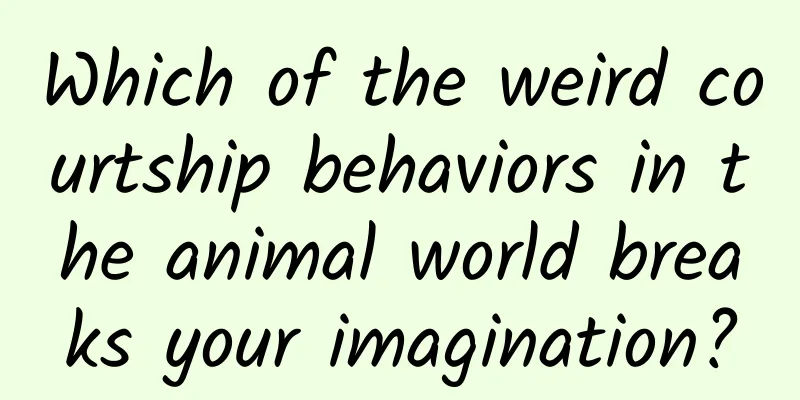A guide to avoiding pitfalls from event promotion plan to implementation!

|
This article contains four parts:
Let’s take a look at the picture first so that everyone can feel it. Do you often encounter this phenomenon during your operations? We often see and even experience:
We obviously have a clear idea in mind, but when it comes to implementation it is still not as good as expected, and then we sigh that ideals are full and reality is very skinny. When you are exhausted physically and mentally, facing a huge gap between ideas and practice, you can't help but wonder "Why?" In fact, it is impossible for plans and practice to be completely indistinguishable. There will be a certain degree of gap from thinking to practice, and from theory to reality. Even if everything is ready, there is still a lack of time. For operations, our value lies in discovering the gap here, solving the problem under such circumstances and achieving the expected goals. 1. Why are there differences between the plan and its implementation?Essentially, this is due to the deviation and compromise between the actual practice process and the expected thinking, and the problems in the preset target value and the probability of success. The difference between the plan and the practice is determined by the size of the target value and the probability of success. The probability of success is determined by the thinker's ability, the adequacy of information, the resources that can be invested, the tolerance of the invested resources, and the ability and willingness of the executor or team. Its model is as follows: actual value = target value * probability of success = target value * [information sufficiency * thinker's ability * (invested resources/actual resources required) * executor's ability and willingness] (coefficient 0~1). There are several points we need to consider in this model: ① Pre-setting of target value That is, the size of our expected goal setting, whether it is impossible to achieve, radical, reasonable or conservative will affect the size of the difference with practice. ② Information sufficiency For example, whether we have sufficient understanding of our users, and whether we have sufficient understanding of our own advantages, product value, business model and value, market competition, and the industry. ③ The ability of thinkers Grasp the adequacy of information and make judgments based on direction, products, market, resource advantages, personal and team capabilities and implementation strategies. ④ Actual resource investment required The actual resource investment required will be affected by track selection, product value, business model, team experience and our expectations for scale. ⑤ Actual acceptable resource investment Due to the limitations and influence of the company's operating conditions, for example, when making external advertising, some companies can tolerate and continue to make advertising when the ROI is less than 1, while some companies cannot, and some companies even lack the budget for advertising. ⑥ Ability and willingness of the executor or team That is, the team's personnel capabilities and qualities, enthusiasm, initiative and degree of cooperation, etc. From the perspective of the nature of the differences, there are differences caused by subjective behavior and differences determined by objective circumstances:
2. How do you view the gap between plan and implementation?There will definitely be a gap between the plan and the practical results. For operations, it is generally necessary to consider the promotion and implementation of the project from the following three aspects:
Because the plan and the actual implementation are always affected by subjective behavior and objective situations, the results will deviate from our expected plan. Precisely because this difference has always existed in our practice, we need to continuously bridge this gap in project promotion. The ability to bridge the gap here is a direct reflection of operational capabilities and value contribution.
For operations, it is necessary to continuously improve one's own capabilities to narrow the gap between thinking and practice caused by subjective behavior. In the face of the differences brought about by the objective situation, we must be able to bridge the gap from plan to practice through strategic means, our own accumulation, leveraging and resource integration, and ultimately achieve the expected business goals. 3. How to narrow the gap between plan and practice?Here we use structured thinking to break down this idea and present the thinking process. As mentioned earlier, the difference between the plan and the implementation results is essentially a deviation from thinking to practice. If we want to narrow or solve the gap between the two, we have to think from both the thinking and practice aspects. It can also be understood as two aspects: thinking activities and behavioral activities: 1. Thinking activitiesThe thinking process mainly consists of four steps: acquiring information (input), interpreting information (deconstruction), processing information (reconstruction), and outputting judgments and decisions (output). 1) (Input) Get information There are two ways to acquire information: long-term accumulation and concentrated acquisition. Long-term accumulation is actually experience, while concentrated acquisition is the process of quickly acquiring new information through concentrated learning, searching, communication, discussion and practical verification. Ultimately, the information obtained from these two methods will serve as the premise for our thinking and judgment, which means that we need to have sufficient information input first. 2) (Deconstruction) Interpretation of information Interpretation is the structured organization of past accumulated experience and scattered and complex information acquired in a short period of time - classification, sorting and selection. Find useful information content and structure. For example, if we want to start a new project, we need to judge the market prospects, feasibility, possible business models, implementation plans, etc. of this project based on past experience. We also need to find specific data support, user group portraits, target user feedback, etc. through research and analysis. 3) (Reconstruction) Processing Information Identify and process past information, extract effective information, summarize experience and rules, and explore the basis for judgment and decision-making. For example, we can extract information about the user group’s identity and price acceptance through the project’s target users’ location, occupation, spending power, etc. 4) (Output) Judgment and decision making It is based on the first three items. Whether the information is sufficient and whether the interpretation and processing are correct will affect the final decision and judgment. 2. Behavioral activitiesAt the implementation level, our behavioral activities are inseparable from the core factors of people (relevant roles), goods (products), places (locations and scenarios), things (how to do it), money, resources, and time. 1) (People) Use the RACIS model to identify relevant roles People can be divided according to their roles: R (who is responsible), A (who approves), C (who is consulted), I (who is notified), and S (supporter). The implementation of the plan involves the participation of multiple roles, which will involve communication, cognitive consensus, and consensus on plans and ideas. The above requires multiple roles to reach an agreement, otherwise there will be resistance when it is implemented. The key to gaining support from different roles is to satisfy the interests of different roles, that is, to be beneficial to them. Here we need to think from their perspective and think about the significance of doing this for the supporters. 2) (Goods) Identify our products and have them ready when they land For example, when we are working on a course project, we must first ensure that the course is polished and launched online, and that it can be polished and iterated within key nodes and established cycles. 3) (Things) Split things into the smallest granularity at the execution level What matters here is the strategies and means developed based on our specific goals. These strategies and methods need to be broken down to the smallest granularity at the execution level. For example, the promotional copy for a certain event needs to be broken down into different promotional copy for different channels. Promotional copy for the same channel at different time points; for the conversion of an open class, it is necessary to break down the specific implementation SOP for each link before, during and after. The core idea in execution is to split things into the smallest granularity, and each item itself is a cycle of people, things, money, resources, time, and effect judgment. 4) (Objective influencing factors) Reduce the impact of objective factors through personal accumulation and organizational resources The venue, money, resources, and time mentioned above will be objective factors that affect the effectiveness of the implementation of the plan. Whether the value of the capital investment can be proved and the approvers can be convinced requires a certain amount of experience, judgment, and data support. Resources and time will also directly affect the practical results, and solving these two problems requires personal and organizational capabilities. At the resource level, one needs to accumulate personal resources and be able to obtain resource support at the organizational level. Time urgency will also directly affect the practice results, which will be affected by personal efficiency, the amount of company resources invested and the window of opportunity for the business. Because the higher the personal efficiency, the more company resources can be invested and the more business window opportunities can be effectively grasped, the higher the success rate of practice will be. 3. The core of continuously reducing the deviation between thinking and behavior activities is to continuously review, optimize and settle1) Review Reflection based on practice closely combines thinking activities and practical activities, and constantly adjusts them during the practice process to correct the deviations between thinking activities and behavioral activities . Through practice, we constantly discover problems, analyze problems and provide solutions to them, and continue to iterate and optimize the entire implementation project to the expected effect and level. 2) Optimization Based on review and reflection, problems are discovered through data analysis, and optimization and improvement plans are further formulated to avoid repetitive problems in the next implementation. The whole process follows the cycle of discovering problems, analyzing problems, and solving problems. In the process of solving problems, the cycle of P (plan) D (implementation) C (check) A (processing) is followed. 3) Sedimentation The biggest taboo in operations work is continuous exploration and experimentation, and there is no deterministic operating model. The entire process is exploration → verification → model formation → repetition → optimization and improvement . This process requires the accumulation of capabilities and resources. Based on the above analysis, we present the whole process from thinking to implementation in the form of a mind map as follows: Based on the above analysis ideas, we have identified several key process nodes from thinking to practice, and provided corresponding key points, risk points/problem points, thinking models and tools. Assist us in thinking and implementing our operations, as follows: The above-mentioned thinking logic, process, and implementation auxiliary tool tables are essentially to make our thinking more structured during implementation, work more smoothly and rhythmically, and not miss any key links. When using them as reference, you should understand the original intention, logic and role of these processes and forms, and then turn them into a way of thinking. Not all projects need to follow the above process and make a bunch of forms. Instead, all implementations must have structured and process-based thinking and a closed loop from implementation to results. 4. Pitfalls to avoid from planning to implementationOnce you have the method, you also need to know the pitfalls to avoid when putting the plan into practice. To sum up: avoid 2 kinds of thinking, avoid 3 kinds of mentalities, and abandon 1 kind of practices. 1. Avoid 2 types of thinking1) Treat industry opportunities as your own opportunities When we decide to do a project, we need to base it on the advantages of our own platform, rather than ignoring our advantages and competing with others. Just like someone assumed: What would you do if your business doesn’t have traffic and famous teachers? ”, in fact, this assumption is meaningless. If there were no traffic and famous teachers, we would not choose this track which is already a red ocean, unless of course you have strong content production capabilities. If you don’t have a unique advantage, how can you compete with others? 2) Blindly believe that if others can do it, you can do it too For example, when operating Deep Selection and NetEase News can continuously carry out a series of screen-sweeping activities, I feel that I can do it as long as I refer to the corresponding methods and ideas. Whether you can succeed depends not only on your ideas, methods and techniques, but also on your abilities and resource advantages. So if your boss always forwards you a link to an Alipay public account with a perfunctory title, ugly formatting, and very simple content that can get 10w+ tweets, and then asks you to write a 10w+ tweet using the public account you just registered, you can just pick up a blank A4 paper and stun him. 2. Avoid 3 mentalities1) Anxious Operation This is a typical violation of the operational "sense of rhythm" and a panic mentality under the pressure of KPI. The greater the pressure, the more severe the anxiety. Then, one no longer considers the input-output ratio of the operating means or the contribution to the goal. All possible means are used anyway. Even if the effect is minimal, we should still gain psychological comfort. This psychological effect can easily cause the implementation to deviate from the expected plan, which will not only fail to achieve the goal but also make you physically and mentally exhausted. 2) Self-perception judgment A common manifestation is that the results do not meet expectations, and people tend to respond to the most direct phenomenon and make sensory analyses. For example, if a course does not sell well, it is attributed to the impact of piracy. If a course revenue has declined significantly, it is habitually attributed to some sensory factors, rather than analyzing whether the funnel data based on the course access link has changed significantly, and then analyzing and optimizing based on the abnormal data in certain links. When you keep making wrong judgments in a certain link, your practice will deviate further and further from the preset plan. 3) Comprehensive They write a big and comprehensive plan right away, without focusing on strategies and approaches. They want to do everything, but do nothing well. 3. Get rid of a habit: Settle for second bestFor example, when making educational products, instead of focusing on polishing the content and services, because content polishing is difficult, we choose to work on marketing routines and gameplay. When doing fission communication activities, one should spend time polishing or selecting hooks that are attractive to target users to drive user dissemination. However, instead, one collects a bunch of information online, puts together a few courses, and hopes to bring in thousands or even tens of thousands of new users at one time. Many times, the reason why there are serious deviations between the plan and its implementation is that we compromise on the most core links and key influencing modules of the plan, proceed hastily, and lose the leverage effect. Author: Jason Source: Super Operational Thinking |
>>: The 5 most easily overlooked points and solutions for short video operations
Recommend
The high-definition schematic diagram of the Chinese space station is here! Common terminology knowledge post for manned space flight, it is recommended to collect
With the safe return of the three astronauts Zhai...
APP promotion tips, free resources from Android app store!
As an operator , you need to dig deep into the ch...
Watching live broadcasts of internet celebrities earns millions of tips, while paying 1 yuan for knowledge-based self-media, why is the difference so huge?
Recently, another anchor of Meipai set a record f...
How to promote Xiaohongshu
With the continuous development of the Internet, ...
A complete guide to community operation
Transaction-based communities can be roughly divi...
With five all-round reciprocating blades, this Mijia electric shaver makes shaving a breeze
There are many essential items in a man's lif...
Nanchong SEO training: How to identify the quality of website articles
For website optimization, both the inside and out...
China Automobile Dealers Association: Analysis of vehicle data for “Xing” certification week testing and certification
Affected by the continued impact of the local epi...
How long can a shit be? It's twice the length of your rectum...
Expert of this article: Yang Chao, PhD in Chemist...
Stories can't save Zhihu
Zhihu, a question-and-answer community launched i...
Flaming lips and a small upturned nose, whose dream monkey is this?
Shiny dark brown hair, fair and delicate face, da...
Internet advertising promotion planning methods!
What is planning? Planning is to simplify complex...
How do Japanese pubs generate private domain traffic?
Friends who often watch Japanese dramas will defi...
The Earth has been moving at high speed, why are humans unaware of it?
As earthlings, it is easy for us to believe that ...
Xiaohongshu Beginner’s Guide: 5 Tips to Master Operations!
Recently, we started to try to operate Xiaohongsh...









